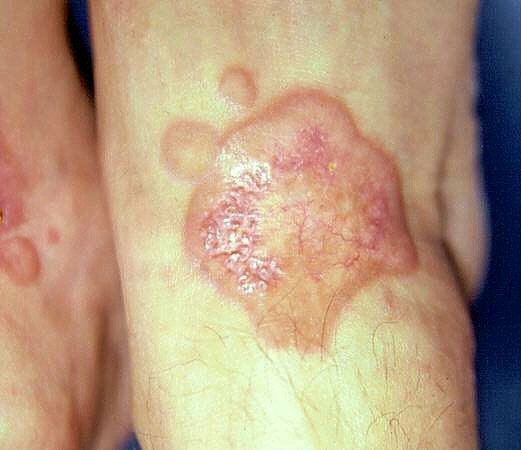Necrobiosis Lipoidica in a Man with Diabetes
Up to 80% of those with necrobiosis lipoidica have diabetes mellitus; however, this disorder develops in fewer than 1% of people who have diabetes.

A 34-year-old morbidly obese man was concerned about multiple lesions on both feet that were appearing rather rapidly. A review of systems disclosed polyphagia, polydipsia, and polyuria.
Key point: These lesions are composed of yellowish, firm plaques with large telangiectasia coursing over the top. There is no associated scaling. This is the typical morphology for necrobiosis lipoidica. This disorder favors the feet and forelegs.
Treatment: Potent topical or intralesional corticosteroids may make these lesions disappear. Refractory plaques may respond to oral administration of pentoxifylline.
Note: About 70% to 80% of those with necrobiosis lipoidica have diabetes mellitus; however, this disorder develops in only 0.3% of all persons with diabetes. This patient’s fasting blood sugar level was 250 mg/dL and his hemoglobin A1c level was 8.8%.